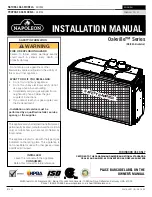
BARTINGTON INSTRUMENTS
Page 4 of 9
OM2298/4
3. Introduction
Both the Mag648 and Mag649™ are magnetometers consisting of a cluster of three, feedback
stabilised, fluxgate sensors arranged along X, Y and Z axes. Each axis provides a highly
linear magnetic response, with low hysteresis and low crosstalk between axes. These
characteristics, combined with the compact design and very low power consumption, make
these magnetometers ideally suited for perimeter surveillance within a multi-sensor network.
Regulating the power supply internally ensures the Mag64x series is suitable for battery powered
operation, over both long and short cables.
The Mag649™ offers a wider bandwidth than the standard Mag648.
High stability circuitry ensures that a minimum of ten years’ service should be expected.
4. General Description
Key:
1. Connector cable 2. Sensing Elements
3. Mounting Holes
4.1. Vector Measurements and Conventions
Each magnetometer produces three independent analogue output voltages in response to the
magnitude and direction of the orthogonal components of a magnetic field. A “right-hand” co-
ordinate system is adopted (see figure 1). In this system the X, Y and Z axis correspond to the
thumb, first and second finger respectively of the right hand. By convention, the magnetometer
should be installed so that the X axis is arranged to point North, the Y axis to point East and the Z
axis to point down.
The centres of the three vector sensors are superimposed; each orientation is denoted on the
magnetometer’s label. The point of each vector arrow indicates the positive direction of each
axis.
2
3
1



























